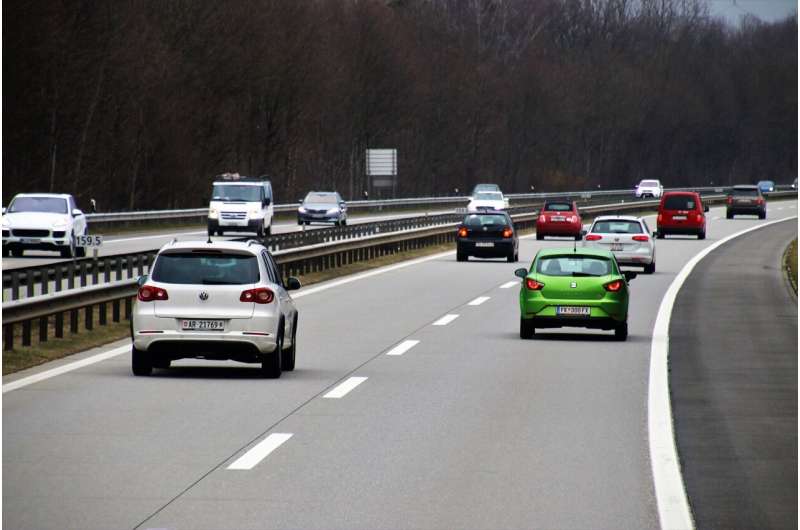This article has been reviewed according to Science X's editorial process and policies. Editors have highlighted the following attributes while ensuring the content's credibility:
fact-checked
trusted source
proofread
Want to share a ride? New study identifies factors that influence ride-splitting

New research from a group including a University of Massachusetts Amherst engineer has helped identify the most important characteristics to increase adoption of ride-splitting platforms like UberX Share.
"For this paper, we focused on a particular form of ride sharing called ride-splitting, which refers to services in which fares and rides are split among multiple strangers who are traveling in the same direction," explains co-leader of the study, Shannon Roberts, associate professor of mechanical and industrial engineering at UMass Amherst. The paper was published in the Proceedings of the Human Factors and Ergonomics Society Annual Meeting.
"With increased ride-splitting, we could have fewer emissions, better traffic, and cost savings," she says. "However, these gains will only be realized if a sizeable amount of the population forego traveling by their personal vehicles and use ride-splitting. If people continue to use Uber and Lyft where they are the single passenger, emissions will increase and traffic will worsen," she says.
Along with UMass Amherst computer scientists, researchers from Abigail Wexner Research Institute at Nationwide Children's Hospital in Columbus, Ohio and General Motors' Roberts surveyed more than 400 people. "The two computer scientists were focused on algorithm development to identify ways to match people in a ride-splitting situation whereas I was focused on gathering information about what makes people use this service," she says.
This survey found that the characteristics of the ride itself were priorities. These included price (does ride-splitting make the cost significantly cheaper than riding alone?), specific ride scenarios (like commuting to work or driving to the airport) and speed (how fast people arrive at their destination).
"In particular, people wanted fast trips," Roberts explains. "The way that current ride-splitting works is you pick up two to three people who get dropped off at various times with a somewhat circuitous route. People were interested in making sure that the route was as short as possible because they didn't want to be in the vehicle any longer than necessary, even though it was cheaper for them to share it with other people."
This contrasts with previous research that found that demographics of fellow passengers (such as race, age, and gender) were top priorities for riders. Roberts suspects that the difference is because the survey takers were self-identified fans of Uber and Lift, recruited through Facebook.
"Because they're already familiar with the service, it may be that they're more willing to overlook things like gender and social class as they're more interested in ride characteristics, like time and price," she says.
Having a sense of knowing the other passenger—either by knowing the other rider or having passenger-to-passenger rating system—was more important than any of the individual demographics, essentially wrapping demographics into one metric, she added.
"With a passenger-to-passenger rating system, we see that people are saying 'I want to be with a person who I feel comfortable sharing a ride.' They're not specifically saying 'I only want to ride with people who look like me,'" Roberts says.
Ultimately, this will lead to better ride-share platforms. "It is critical for us to understand what will increase trust and make users more comfortable using these systems," she says. "Without such information, these services will not be used."
She also hopes users of these services will also see this research. "I think making people more aware that the service exists, it won't dramatically increase your travel time, it's more energy efficient, and it's inexpensive, is really important."
More information: Fangda Zhang et al, How Do People Prefer Ridesplitting? A Survey Study Focusing on Passenger, Matching, and Trip Characteristics, Proceedings of the Human Factors and Ergonomics Society Annual Meeting (2023). DOI: 10.1177/21695067231195826


















